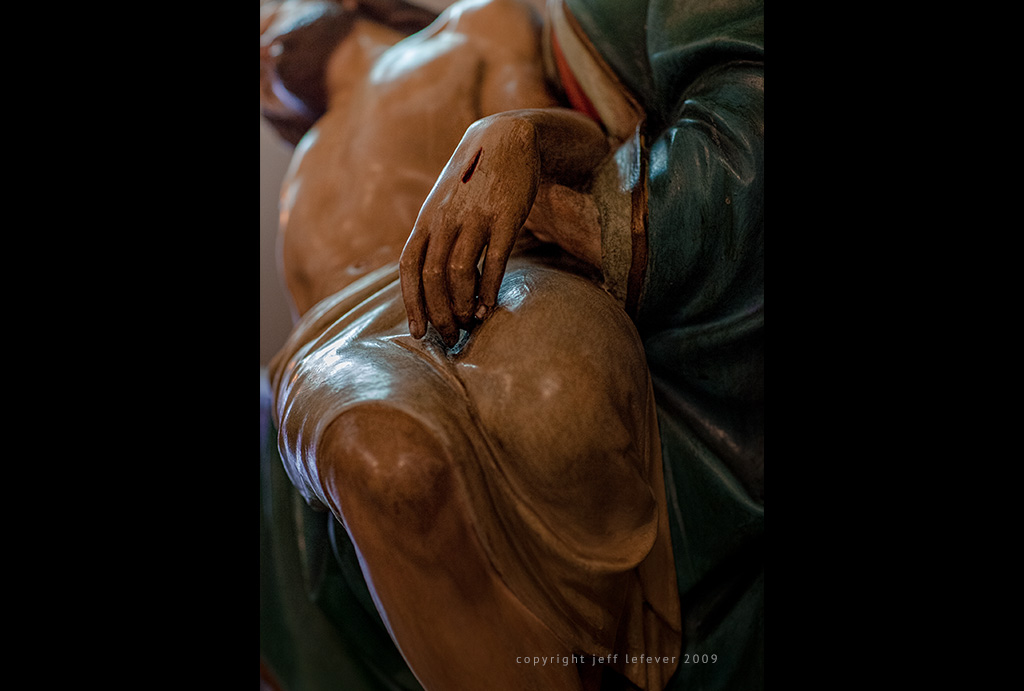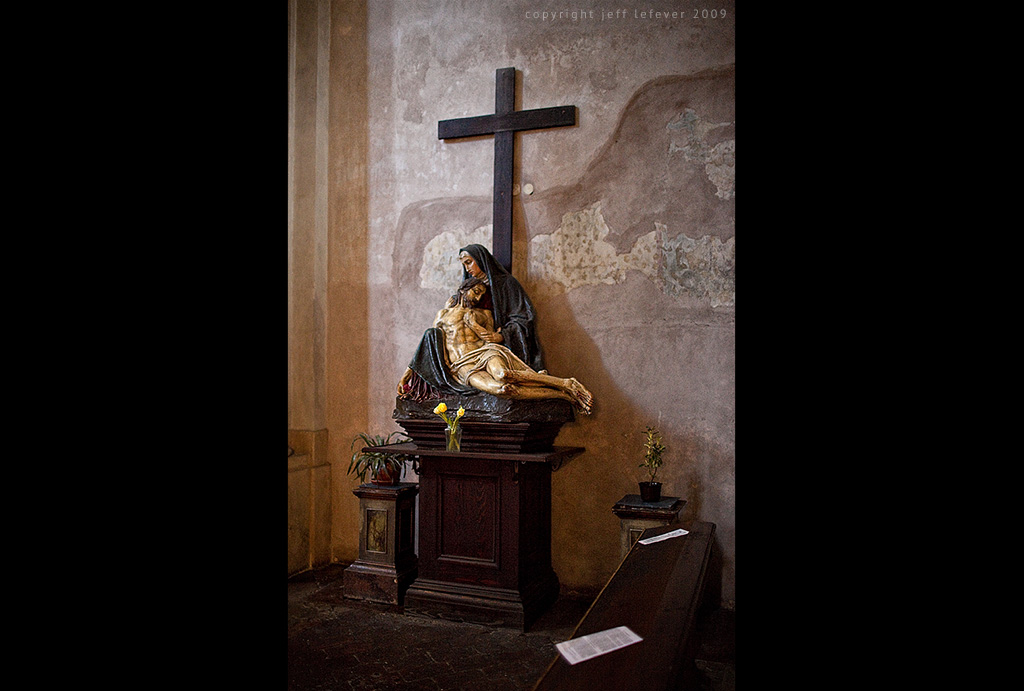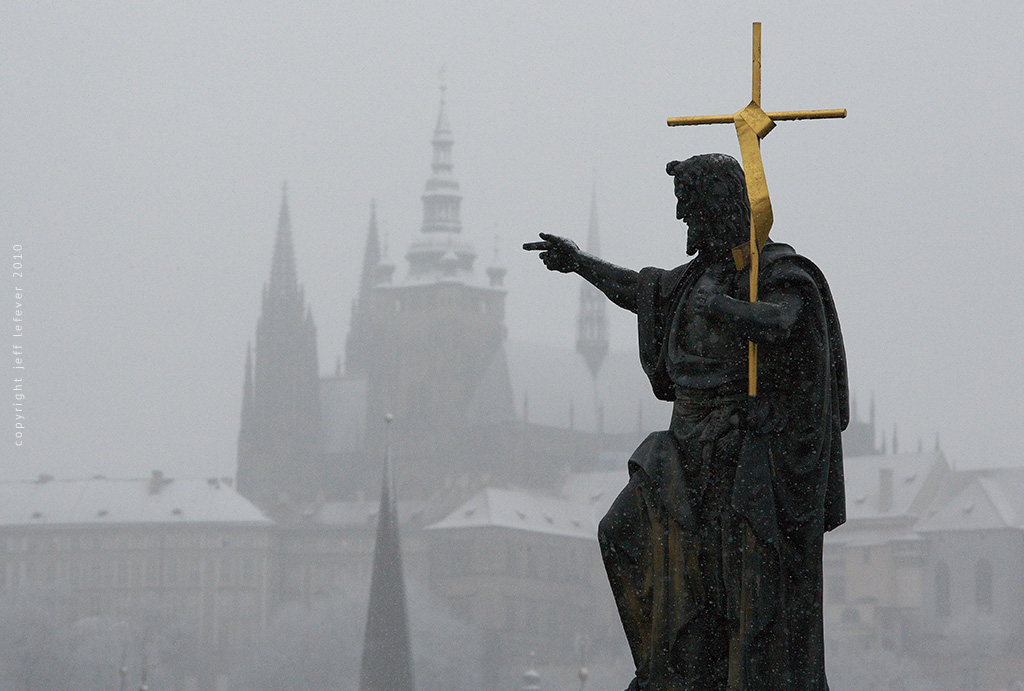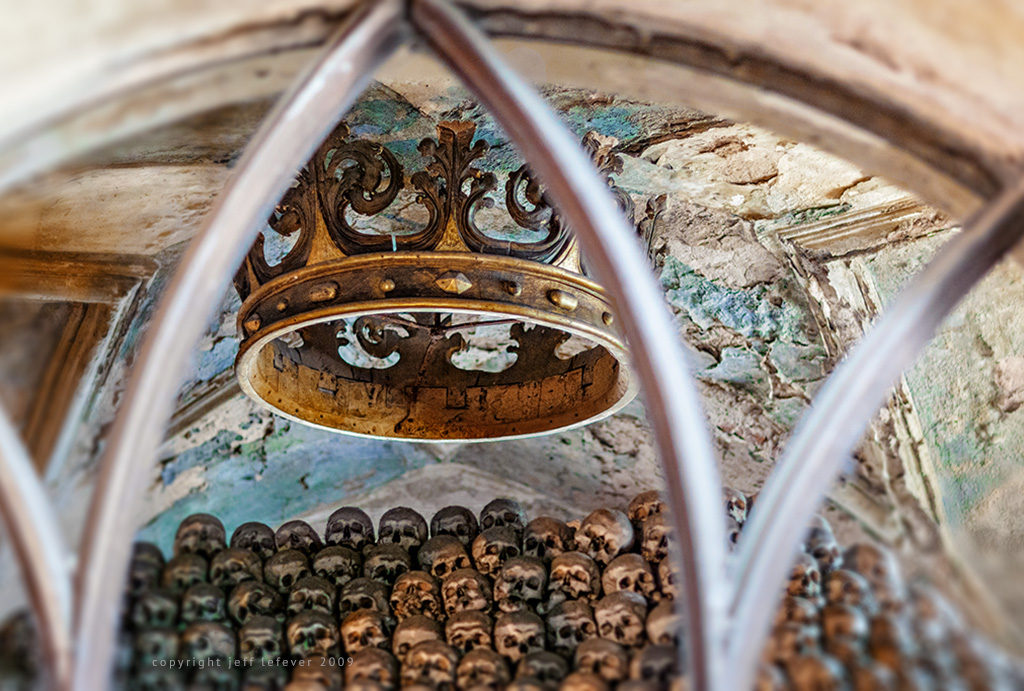I am fascinated by the wounds. I am drawn to them. They resonate with me on many levels:
The pierced feet of Jesus, His hands, His side, the punctures to the crown of His head, the lacerations and bruises on His body, the swelling, the tears and rips, the dried blood.
I’m reminded of a quote from Beauty Will Save the World by Gregory Wolfe:
“…what ultimately drew me to the church [Catholicism] was another facet, one about which too little is spoken. It’s what the great Basque philosopher Miguel de Unamuno called ‘the tragic sense of life.’ At the center of this sensibility is a profound awareness of the ambiguities and divisions within the human heart, along with a stress on the importance of suffering and contemplation. I came to understand why Catholics venerate the crucifix, not the empty cross…”
Many would disagree, claiming we praise a risen Lord and have taken Him off the cross, or saying that the resurrection, not the crucifixion, is our saving grace, that without the resurrection there is no salvation. I have heard that displaying Jesus crucified is to re-crucify Him over and over again.
Perhaps it is that I am moved by the tragic: seeing the wounds reminds me of the price that was paid on our behalf. The resurrection has little meaning without the crucifixion. Had Jesus fallen asleep for our sin, and then rose from that sleep, then the pain he endured for our sake is minimized to cuts and bruises.
A statue or painting of the crucifix is not Jesus, nor is a Pieta His dead body, but they are reminders to me and to others – to all of us corporately – of the “tragic sense of life” and the “profound awareness of the ambiguities and divisions within the human heart,” the “importance of suffering and contemplation.”
My academic awareness drops from head knowledge to my heart via my imagination, and my emotions are engaged in a type of empathy and compassion: I am united, body and soul, with the notion of culpability and love. The idea becomes a bit more tangible.
The blame is not scornful or diminishing, rather it conjoins me with the Love that pays my way. It is beyond words or description, and that is precisely the place where the Holy Spirit works.
It all works together.
I like the wounds we depict in the arts because I remember the suffering, my suffering, and the suffering servant, who yes, is no longer on the cross.
And THAT is another subject of art for contemplation.
“There have been times when critics have confused the tragic sense with mere fatalism. I suspect that is because Americans still suffer from the illusion that they can escape tragedy and remake themselves in the process. The truth as I come to see it is that the tragic sense of life is the ultimate antidote to religious arrogance and sentimentality as well as to the ideological triumphalisms of Right and Left“
~Gregory Wolfe, Beauty Will Save The World
Pieta, Chicago.
~ JWL



